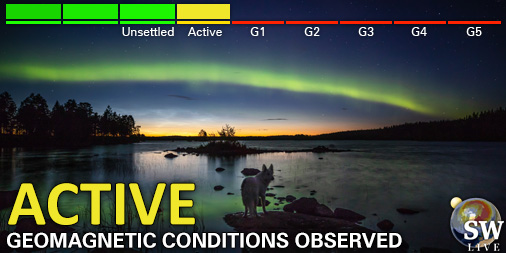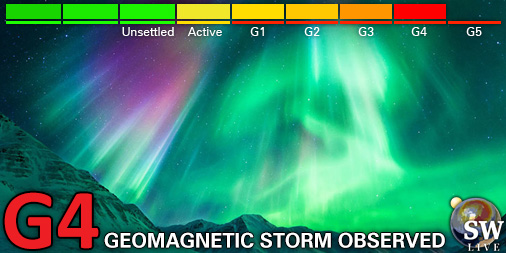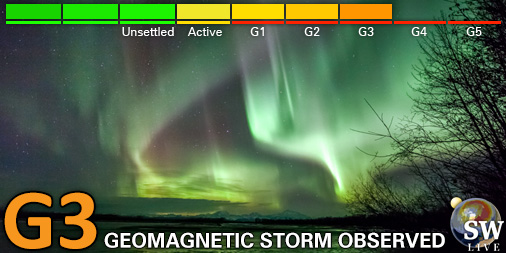Visualizzazione archivio di lunedì, 16 marzo AM
Seleziona l'elemento desiderato dell'archivio
C9 solar flare, sunspot region 2297, CME arrival?
A long duration C9 solar flare took place yesterday morning near sunspot region 2297 and launched a partial halo coronal mass ejection into space. While it is not a full halo coronal mass ejection, the coronal mass ejection was nonetheless very wide and caused an increase in the protons and electrons at Earth meaning that this coronal mass ejection will likely arrive at Earth. Based on the ejecta speed, the coronal mass ejection could arrive during the UTC evening hours of 17 March and cause a minor G1 geomagnetic storm.
Ultime notizie
Ultimi messaggi dal forum
Supporta SpaceWeatherLive.com!
Molte persone vengono su SpaceWeatherLive per seguire l'attività del Sole o sapere se ci sia la possibilità di vedere l'aurora, ma a maggior traffico corrispondono costi maggiori. Considerate una donazione se vi piace SpaceWeatherLive così che possiamo mantenere online il sito web!

Ultimi avvisi
04:15 UTC - Attività geomagnetica
Condizioni geomagnetiche attive (Kp4) Soglia Raggiunta: 03:57 UTC
02:30 UTC - Indice di potenza emisferica
Il modello OVATION prevede che l'indice di potenza emisferica raggiunga i 50GW alle 03:23 UTC
mercoledì, 16 aprile PM
21:45 UTC - Attività geomagnetica
Tempesta geomagnetica G1 minore (Kp5) Soglia Raggiunta: 21:36 UTC
21:00 UTC - Attività geomagnetica
Tempesta geomagnetica G1 grave (Kp5) Soglia Raggiunta: 20:55 UTC
19:45 UTC - Attività geomagnetica
Tempesta geomagnetica G1 forte (Kp5) Soglia Raggiunta: 19:25 UTC
Notizie sul meteo spaziale
| Ultimo brillamento X | 2025/03/28 | X1.1 |
| Ultimo brillamento M | 2025/04/15 | M1.2 |
| Ultima tempesta geomagnetica | 2025/04/16 | Kp8- (G4) |
| Giorni senza macchie | |
|---|---|
| Ultimo giorno senza macchie | 2022/06/08 |
| Media mensile Numero di Macchie Solari | |
|---|---|
| marzo 2025 | 134.2 -20.4 |
| aprile 2025 | 120.5 -13.7 |
| Ultimi 30 giorni | 118.3 -22.1 |






